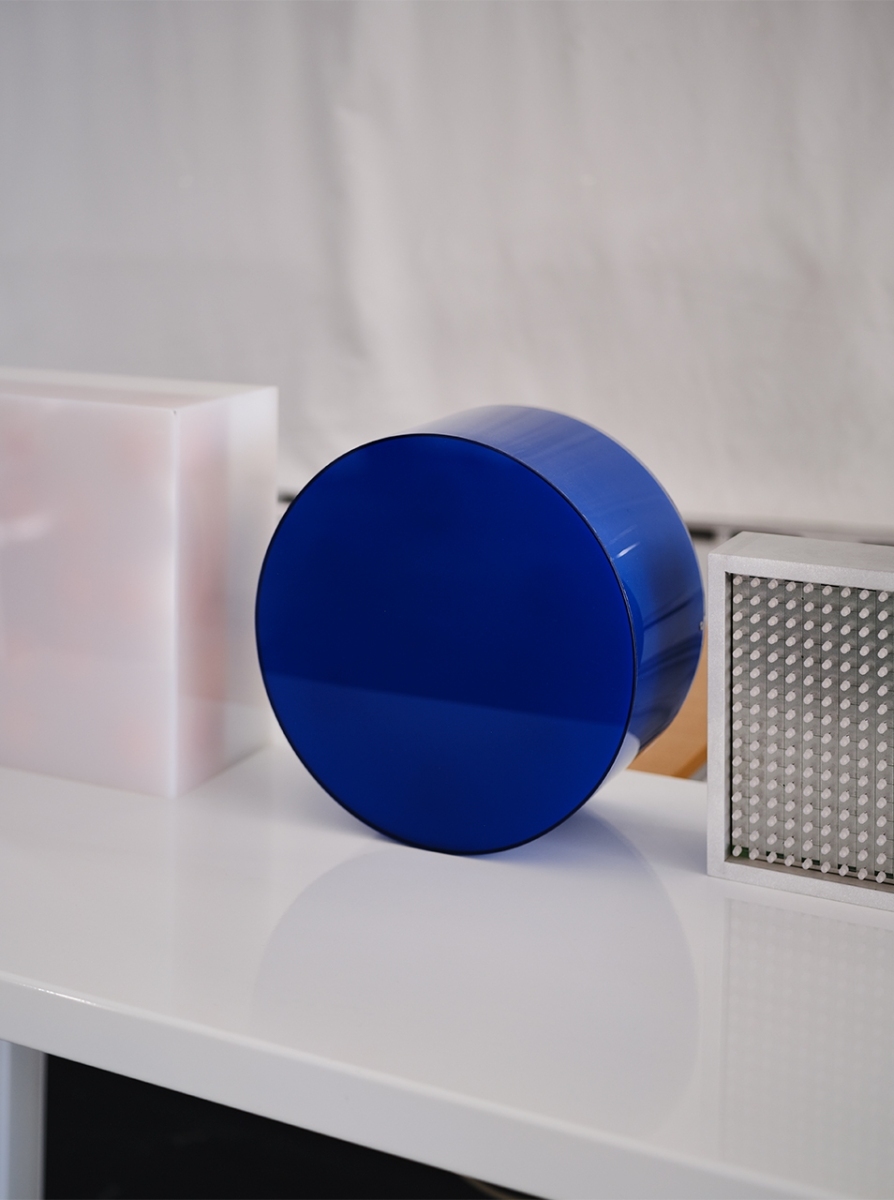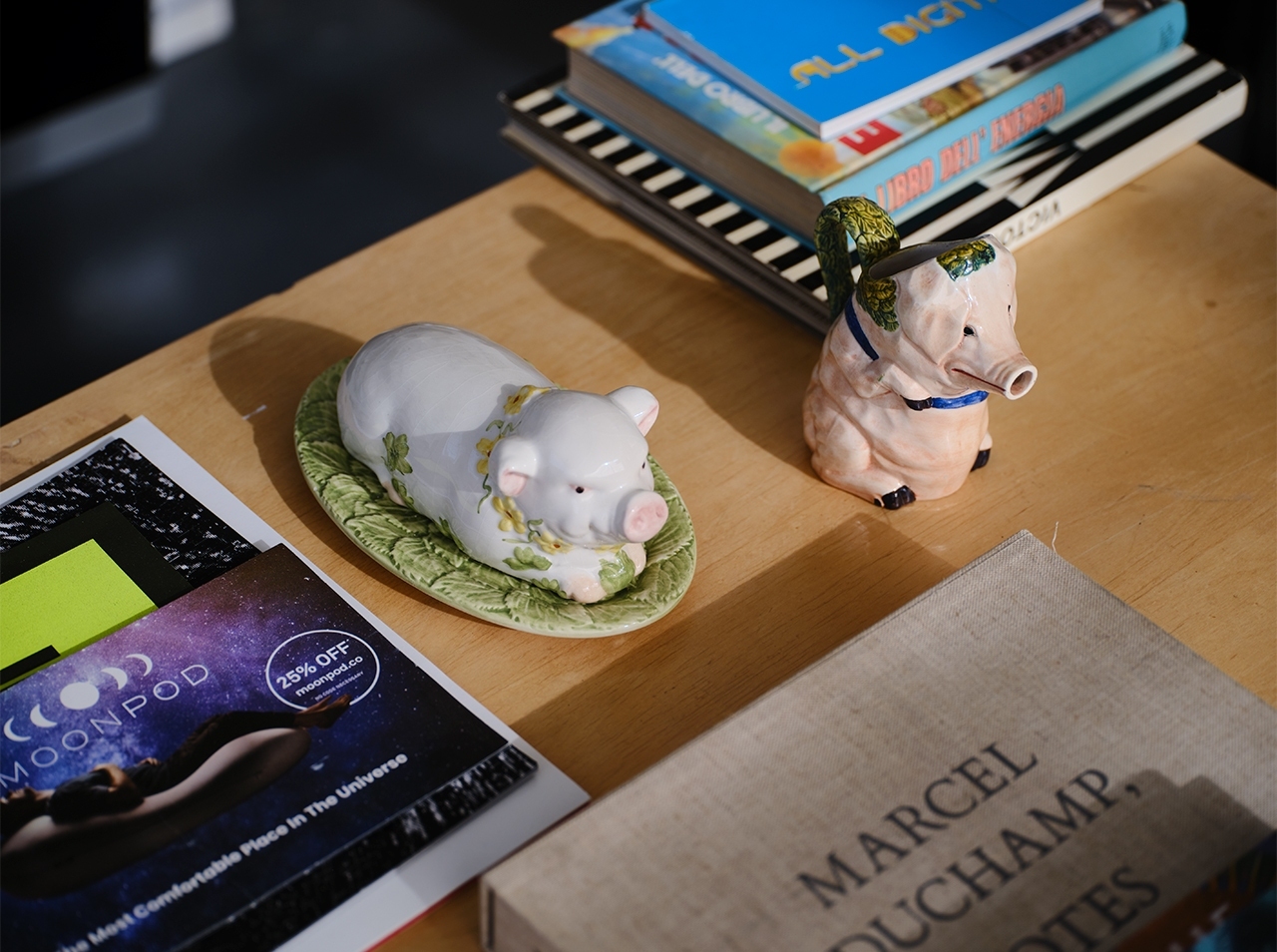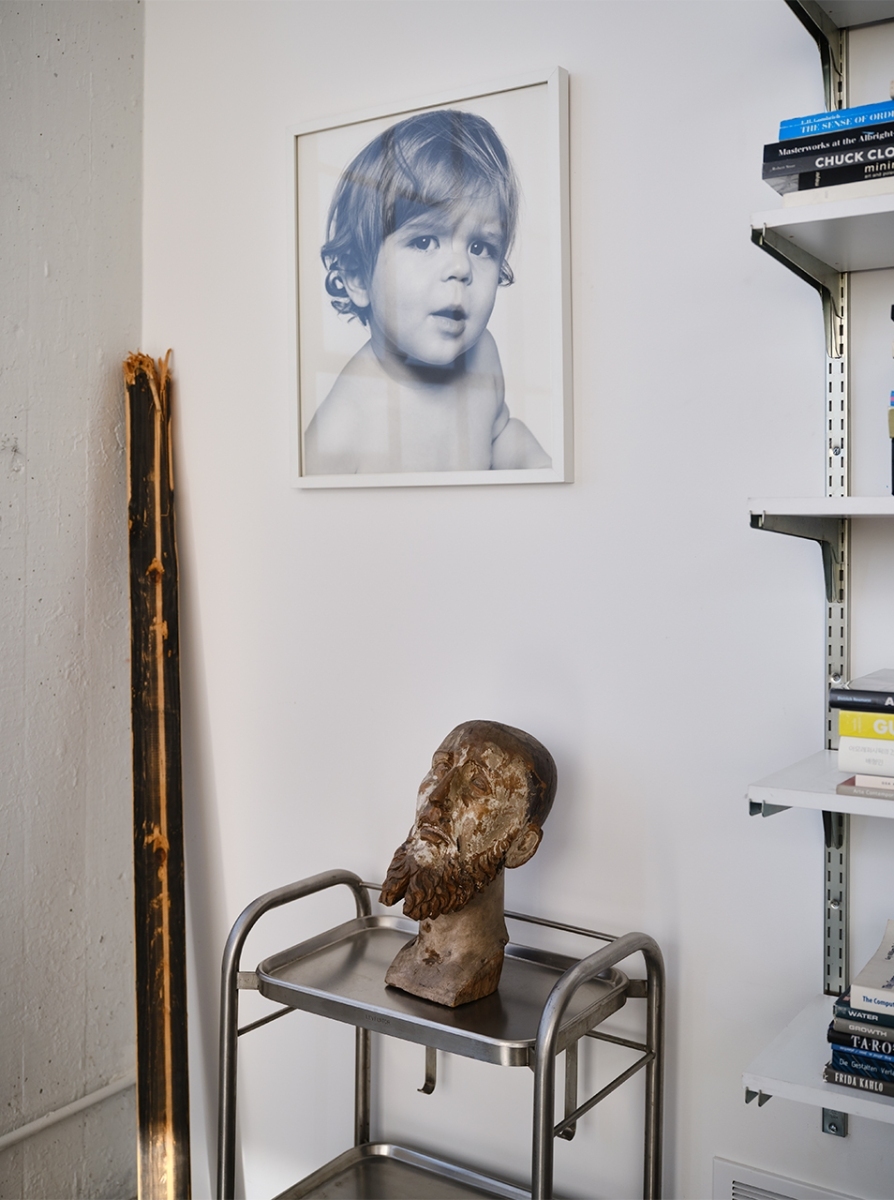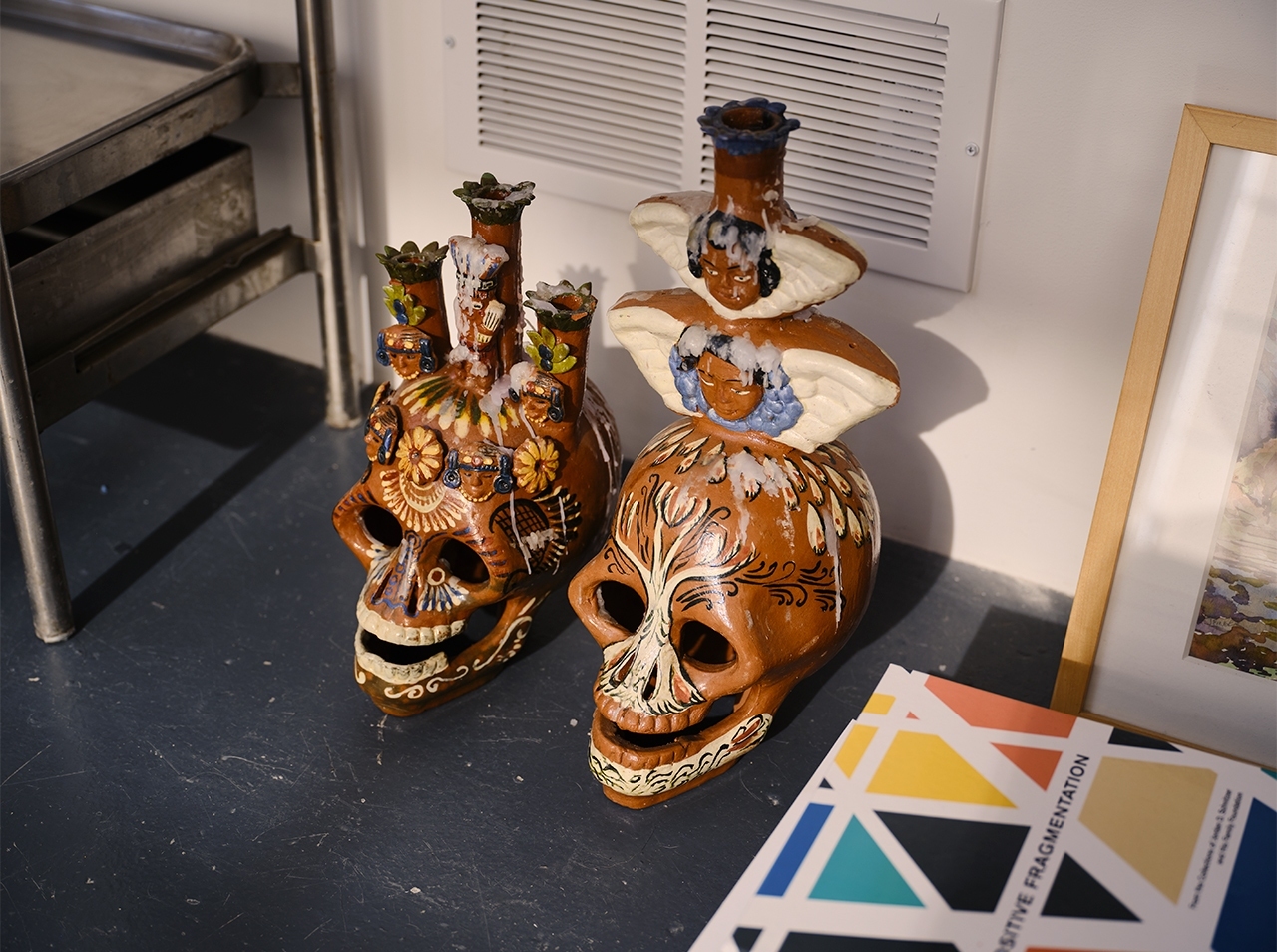
LEO VILLAREAL Interview
A City’s Life Through a Gate of Light


A man sits at the mouth of San Francisco Bay, peering at a computer. Before him a world-famous monument, the glorious span of the Bay Bridge. People gather around as he lays his fingers on the keyboard. And suddenly, the bridge is alive with streams of light dancing across the cables and bed, seemingly in response to the rhythms playing upon it, the water running beneath it. He touches the keyboard and the lights dance differently. Once again and the entire structure is throbbing with life. The man is artist Leo Villareal, and he’s working his “canvas” as legions of artists have before him. Unlike theirs, his pigments are ephemeral, but their impression, just as indelible.Firmament (Mori), permanently overlooking the centered entryway to Toranomon Hills’ Station Tower, is Villareal’s first public artwork in Japan. It will permanently welcome visitors into the heart of Tokyo’s newest locus of business, commerce, and culture; inspired by and continuously in conversation with the flow of people, the patterns of traffic, the life, the tenor, even the climate of the surrounding neighborhoods.We visited him at his Brooklyn studio to talk about the inspiration for the work and the origins of his thinking. Deeply moved by his experience of creating the work on site, he explains what Tokyo itself brought into it through his eye and hand.
TEXT BY MIKA YOSHIDA
INTERVIEW / ADAPTED FOR ENGLISH BY DAVID G. IMBER
PHOTO BY NICHOLAS CALCOTT
EDIT BY KAZUMI YAMAMOTO
illustration by Adrian Johnson
The work is titled Firmament (Mori), the parenthetical designation a tip to the existence of other Firmaments in the artist’s body of work. In the West we may first hear the word in scripture, where it’s meant to point us to an inhabiting spirit beyond sight. But for Villareal, “It’s what’s above… the heavens, the stars… I grew up in the desert in Mexico and Texas and spent a lot of time looking at the sky and thinking about it. I’ve always been very curious, and wanted to know ‘what are the rules, and how is this constructed?’ So I’ve found it interesting to be able to evoke a lot of these systems that look like stars, particles, celestial bodies glowing. But it’s not an interpretation and it’s not literal. It’s more of an evocation.” The portion of the building the work inhabits is, in fact, what the architect has designated the “Sky Box”.
Another part of his boyhood experience may also have infiltrated the artist’s inspiration. “ I spent a lot of time looking at Mexican muralists when I was young. My father was from Chihuahua, and we went to Mexico City a lot and looked at the murals of Diego Rivera, and Siqueiros. A lot of these murals are telling the story of how things happen. Rivera has images of the cosmos, but also paints things under a microscope, so you see both a micro and macro level.
“We’re bringing the heavens down and allowing people to experience them in a different way,” he says. “As human beings we’re very attracted to light, we’re hard-coded to look at and respond to it. The other part of this is the connection to nature. When you see these forms, I feel like they’re very much alive.”

Leo Villareal in his Brooklyn studio standing before a piece from his Interstellar series, exhibited earlier this year at Pace Gallery, New York
A bridge and a beacon

Firmament (Mori) is situated over the centered portal of the Toranomon Hills Station Tower beneath a structure known as the “Sky Box”. Photo by Satoshi Nagare
Public art is a hallmark of all of Mori’s “Hills” developments and can be viewed in multiple areas of the new Station Tower. We were curious about the deliberations regarding placement of this current work.
“It was very much of a collaborative conversation with OMA. We got very involved with Mori and with the architects in discussing the tower. It was a lot about being able to share my work, having them understand that, and then finding where the opportunity was with the Toranomon Station Tower. So I was very excited to see the design of the building, and have always really admired OMA and Sho,” referring to Shigematsu Shohei, the tower’s architect and director of OMA’s New York office.
As the architect explained in this publication’s August 2023 interview, “A Line Through the Beating Heart of Tokyo”, the tower is both a destination and a new passage, extending a major public thoroughfare that previously ended at the development’s feet, via a park-like bridge conveying all pedestrian traffic to and from the building. “It was described to me as almost like a Champs-Élysées, in a way, terminating at this building… It was a discussion about which parts of the building could be ‘activated’. So we explored the crown of the building and various places within it. It felt like that ceiling was a great opportunity to mark it with something special, something dynamic.”
“Firmament is an ever-changing marquee befitting and becoming of the life and movement around the Toranomon Hills Station Tower,” Shigematsu said of the work. “It enhances the energy of air, light, and people. Activating the underside of the sky box, it is a dynamic gateway and alluring interface to the tower that makes people look up, and draws them in.”
Both the architect and the Mori Building Company’s president, Mr. Tsuji Shingo have shared superlative praise for the work, but more than that, the opinion that it feels so integral to the structure that upon seeing it in place, they can’t picture the tower without it. “I’m incredibly honored to have had the opportunity to work with Mr. Tsuji. He saw my show at Pace in 2017 and he came to my studio. We’ve been working together for a very long time. … You want every project to be like this, with an amazing architectural team and highly capable professionals, concerned about all the things they should be caring about, but also allowing me to create the work there, on site, and trusting me. Because we did some renderings, but the idea that you’re going to let the artist come and do the work on site, that requires a level of trust.”

The artist’s Sunrise Park studio is apportioned into areas of shade to better view the work, and areas of administration and conservation, flooded with light, that look out on New York Harbor.
Villareal’s methods, both in the studio and in the field, bear examination. He’s been working with his studio’s own proprietary software for over 20 years. “I’m engaging a lot of concepts of emergent behavior and artificial life. This sounds complicated, but it really only means that I’m setting up certain conditions, then letting them happen. When I see something I consider compelling, I capture those moments. Those become the ‘building blocks’ for the artwork. So I’m making discoveries along the way, and then those things are dynamically recombined.” It’s life, up to the point of autonomy. “If I left it to its own devices, 99% of the time it wouldn’t look the way I want it to look. So as the artist, I’m there editing, selecting, making all these choices. … The other important thing is that the artwork was made there, onsite. We’d done some studies, but the piece was made there — it’s site-specific. I sat there night after night, learning about it, programming it, and responding to its location. Almost like tuning a musical instrument, although there’s no sound component. But there are concepts of synesthesia and remapping the senses, and I think those are some of the effects that are happening with the artwork.”

Villareal worked by night at his municipal “easel”. Photo by Satoshi Nagare
The primary challenge of this work presented itself to the artist as an opportunity. Villareal’s work to date has occasionally involved open and curvilinear forms, such as the Bay Lights, the underside illumination of nine bridges over the Thames in London, the Bleecker Street station of the New York City subway, and a 200-foot-long tunnel designed by I. M. Pei for his National Gallery building in Washington D.C. But much of the more gallery-oriented work, owing to the shapes the technology is most often given to, have tended to be equilateral and rectilinear on the whole. Viewed in line with these, Firmament (Mori) could almost be read as two perpendicular iterations of his familiar “canvas”. The artist saw something entirely different and new in the amorphous, unrestricted shapes that could arise once this work was mounted upon the structure.
“We ended up doing this sort of notch, which is asymmetric. I usually work in very primary forms — circles, squares, rectangles… So for me this was a little outside my comfort zone. But trusting OMA and Sho, and Mori was very important. When I arrived there and saw it I was absolutely thrilled. One of the most exciting things is the way it interacts with the glass. … There are certain themes I work with, recurring forms that ‘emit’ — sort of energy centers or spheres, clusters… And I’m working very much with different layers. I think of the works as having a foreground, midground, background layer. It’s very painterly in a way.
“This piece is mirrored in the glass and there are a lot of radial patterns in it, so it’s emitting these forms, and a half-circle becomes complete with the mirroring. … I use mirroring a lot in my work, with surfaces reflecting light and emitting light. The detail that occurs with the Station Tower, with its complex wedges of glass, introduced things that we couldn’t have anticipated. But I was very excited to see the doubling of the piece and how it extended into the building.”
Though Villareal grew up under broad skies in the American Southwest, and he speaks of turning his future attention to large-scale works in the desert environment, he’s to date largely been thought of as an urban artist. His wife, Yvonne Force Villareal, has devoted her career to bringing art to civic spaces; among her other achievements, having co-founded the nonprofit Art Production Fund, which commissioned public art projects throughout the city. Knowing how strong an aura the Mori Company philosophy of the “Vertical Garden City” casts over its communities, we wondered whether their urban vision came across to the artist as he was developing the work, and whether it influenced the creative process.
Besides the necessarily complex Station Tower there were simpler satisfactions. Villareal described the site as a kind of oasis. “I didn’t know much about their philosophy, but I could feel it deeply. … There are kids running around, there are people walking their dogs, there’s really a neighborhood kind of feeling. It feels like each building has its own function. Some are residential, some are business buildings… But I think this redefines what you can do with a ‘tower’. I was amazed at all the interactive spaces and the concert halls, and places where things can happen. It feels kind of futuristic, in a utopian kind of way; their attention to detail is extraordinary. You leave the street, and suddenly you’re immersed in the world of Mori. Bringing people into the tower and up to the top of the building is also very exciting, because that’s not the way things normally work in New York. It feels very cultivated and, I think, very generous. I was watching people sitting in these beautiful spaces and comfortable chairs, with food and music. There was a garden where there was a basket of blankets that people could just take and put out to sit on the grass — I was struck by that.”
Seeking essential structure

Several Villareal sculptures pay homage to the fullerene, the lately discovered carbon particle whose icosahedral molecular form gives it the resilience to endure vast, unforgiving swaths of the known universe.
Raised in El Paso, Texas and attending boarding school in Rhode Island, Villareal’s path to the art form he’s globally known for met a juncture at Yale University, where he immersed himself in the study of art history, and his incipient artistic bent led him to an interest in set design. He might have pursued it further if not for a class with renowned sculptor and land artist Alice Aycock. “I had been using a lot of collage technique, and I shifted into installation. I realized that I could do a lot with space; create space with light and video. I realized that — whoa — I don’t need a play or a theatre, I can make these things in another way.” He left Yale with a degree in sculpture, and entered New York University’s Interactive Telecommunications program, a two-year residency that culminated in 1994 with an internship at Microsoft co-founder Paul Allen’s Interval Research lab in Palo Alto, California. “I thought I’d be there for three months, and it ended up being three years,” he reflects with a laugh.
The emergence of Photoshop and similar digital reordering software, along with the early promise of virtual reality and 3D thrilled Villareal with its creative potential, but left him disappointed in its execution. “I didn’t like computer screens. People had such a response to the object of the computer, and I didn’t want the focus on that, I just wanted to see the visual manifestation of the code.”
The artist’s first opportunity to fully pull these competing ideas together was serendipitous, and emerged from an unlikely setting.

Next to construction, conservation is an utmost concern. View of the administrative portion of the studio.

To glimpse the “ghost in the machine”, one must look beyond the technology.

The seedlike elements of Villareal’s work are laid out like an elemental catalogue across the studio’s walls.
“The light itself is very powerful.”

The Burning Man culture festival in Nevada, held annually since 1986. At night the immense stretch of desert is pitch black, save for illumination provided by festivalgoers. Photo by Andrew Wyatt
He attended the Burning Man festival in Nevada’s Black Rock Desert for the first time in 1994; a unique and rewarding experience but for the observation that, in the artist’s words, “it was very easy to get lost there.” To address this, upon several more visits he crafted a unique beacon system using 16 strobe lights. “It was the first time I connected software, light, and space; and that changed everything. I realized I could do a tremendous amount with a small amount of information. At that point I’d been doing virtual reality research in Palo Alto, and I thought this was much more interesting, you don’t have to put on a head-mounted display, and you don’t need a million-dollar supercomputer. All I needed was a simple microcontroller and some code and I can create very powerful pieces.” Asked if at that point he considered the work that of an artist or a “maker”, he replied, “This thing I made in 1997 was a beacon, a utilitarian device. I didn’t think of it as an artwork. But then I brought it back to New York and put it on the wall of my studio. I put an acrylic box over it and realized that I can make light sculpture! That’s what got me going down that path, and it’s what I’ve been exploring since.” While much of Burning Man’s site art of the era, and still today, is based on image projection, that was never of prime interest to an artist who’d spent years researching methods for moving attention from a light’s source to its visual manifestation in code. “The light itself is very powerful. So when I connected software and light I realized that those two things together was what I wanted.”
Art aloft on the vitality of a city

“I have had this kind of engagement with art and artists in terms of my curiosity about how things work.” Though reminiscent of a Jasper Johns series, the artist favors art to which anyone can respond on some level, whether aware of the historical references or not.
Looking back to Villareal’s formal education in art history, considering the artist’s own quest through craft to the discovery of art, and the urban savvy and family connection he has to art’s institutional aspect, we broached a most difficult and sensitive topic. How does the artist himself, eschewing traditional means of creation as he does, see his art in line with that institutional continuum? “Artists like Sol Lewitt are dealing in rules and structures, and then leaving some things open to interpretation. … I started with rules, mathematical rules, geometry, ideas about cellular automata. I slowly got into physical laws, and that led me to thinking about what a Rothko is from an algorithmic perspective. … I have had this kind of engagement with art and artists in terms of my curiosity about how things work, and trying to break down and understand them. But I’m doing it from my own code perspective, not using pigment, but light, and time. That’s just the way I try to understand things.”
Asked whether working at the Toranomon Hills site night after night changed the character of the work in some way, he explained, “each piece is different, and I love the urban landscape. I love cities. I grew up in Texas and New Mexico, but the first time I came [to New York] I said, ‘I want to live here.’ It felt like a very powerful magnet pulled me there, and it’s given me a lot of energy.
“The sensitivity with which the patterns are created, the tempo, all these sorts of things are what’s important to making Firmament work. For me the inspiration comes from all the kinetic activity around the site, so I’m interpreting things that are happening and the piece becomes a mirror of what’s happening around it. There’s a deep connection to the site, and I’m there responding. I think that’s when it ascends to the realm of art.” The uncertainty of the next step in a pattern brings “a sense of mystery. … That’s what’s key to my work. It’s not about any one moment, it’s a progression.”
Acknowledging the artist’s professed fondness for Japan and feelings of connection with the city of Tokyo, as well as his peripatetic developmental period, in which he experienced rich urban and rural vistas in every corner of the United States, we asked whether Mori’s principle-driven developments like Toranomon Hills have any special resonance for him.
“I read very recently that Tokyo was one of the most livable cities. People could make a living wage, and there are enough places for people to live within that range, along with a transportation network that’s high-functioning, unlike other cities… Things like zoning are arranged in a way that allows for people to do the things they need to do in a city.
“We walked around it and loved the feeling that there are ancient things and new things all together. And you’re not stuck. I believe in preservation, but I think that to a certain extent you have to let things evolve and grow. That’s what I felt in the area. This is something very new, but also makes a place for the people who lived there before. That kind of adaptability, I thought, was quite interesting.
“We need visionaries right now, because we’re dealing with so much change and flux. It’s easy to be pessimistic, but I really do believe in technology and technological solutions, and I think we’ve done amazing things over the past hundred years. But I think we can do more. I think these are really exciting examples of what is possible.”

Endless patterns of light in the sky. “We’re bringing the heavens down…” Photo by Inki Kang ©Leo Villareal Studio
And of the artist’s role in this forward-looking vision of urban development? “I’ve described my pieces as digital campfires, where people can gather. It’s about that experience of seeing these things together in space. Taking these digital things out of the computer, making them large, but then letting people have this experience of enjoyment with them. I’ve seen people with the Bay Lights in San Francisco — people can’t help but to talk to one another because it provokes such a sense of wonder and awe that suddenly you kind of have to talk to someone about it. … A lot of that happens with the work. People really sort of bond in an interesting way, because I think what the pieces do is activate space, and bring things to life. And they’re very open-ended. That’s the part that I like. There’s a way that it really can stand the test of time and evolve.
“A tremendous audience is seeing these works and it can have an impact on a citywide level. It’s exciting to see the power of art and the power of monumental public art. These projects, beyond being public art for everyone, are even financially beneficial for cities.
“But there is, in Japan, a deep connection to nature and a reverence for it, and I think this is connecting to some of those essences. I hope that that is what people are taking away from it.”

Leo Villareal
Born in Albuquerque, New Mexico in 1967. His work is characterized by complex, rhythmic patterns changing in frequency, intensity, and pattern structure using a variety of light sources, and animated by a coding system the artist devised and refined over more than two decades. His site-specific public art works include “Bay Lights” (San Francisco, 2013), an installation of 25,000 LEDs on the Bay Bridge, and “Illuminated River” (London, 2021), which illuminates nine bridges over the River Thames. His work has also been installed in the National Gallery of Art in Washington, DC; and the AKG Museum of Art in Buffalo, NY. He and his wife, son, and daughter live in New York City and also have a base of operations in Marfa, Texas, where his ancestors settled in the 19th century.




















SHARE